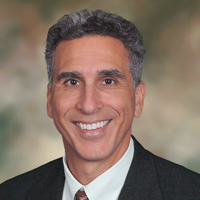Saving for Retirement as a Single Parent
To do the right thing for your kids, you need to do the right thing for yourself as well. While it's not easy, you can save. Here's how to start.


Saving money is tough work. As a financial adviser for more than 28 years, it seems that no matter how much money people make, they feel they don’t have enough to put any into savings — even people with high discretionary incomes often appear to fall into this mindset.
If it’s tough for even the wealthiest people to save, it may seem impossible if you’re trying to raise children on your own. But I don’t think it is. I think most people can find some money to put away for retirement. And I think that neglecting to save for retirement is one of the biggest financial mistakes you can make. But how to begin when every penny is precious? Here are a few suggestions:
Start small. Save what you can. Even if you put aside just $10 a week, you’re making progress toward a goal. You’re getting into the habit of saving, and you’re helping that money grow.

Sign up for Kiplinger’s Free E-Newsletters
Profit and prosper with the best of expert advice on investing, taxes, retirement, personal finance and more - straight to your e-mail.
Profit and prosper with the best of expert advice - straight to your e-mail.
Think in terms of three buckets. Split your income into three portions. One portion goes into a bucket you can draw from for your family’s immediate needs: food, housing, medical costs, etc. Put money for mid-term goals — like your children’s college education — into a second bucket. And put another share into a third bucket that will support your long-term goals, like retirement. There may be times when you need to put more money in one bucket than another, but strive to always contribute to each bucket.
Take advantage of tax-favored accounts. You could use IRAs or 401(k)s to help grow your retirement savings and save on your current tax bill at the same time. And if you are fortunate enough to work for a company that matches your contributions, it helps to save much as you can. If your employer will match your contributions up to 5%, then it makes sense to find a way to put in 5%. It’s like free money.
Once your kids can contribute to their future, let them. When it comes to saving for college, I believe most children want to participate in the effort. They should, because it’s their cause, and their future. Many people I know, myself included, worked during their college years. My mom could have given me the money I needed for college, but instead she said, “Don’t rely on me for money anytime you want it. I’m not an unlimited source of cash that drops down from the sky — but I am your safety net.” I think my mom’s philosophy about money taught me responsibility, and reaching my goals felt more fulfilling because I had to sacrifice in order to obtain them.
Don’t budget. Commit to saving. After all these years of working with people and their finances, I’ve decided that I don’t believe in budgets. Trying to cut back on things you want to do usually doesn’t work (unless you’re trying to cause family arguments). Instead, I suggest you decide to save a certain amount each month, and then just do it. You'll automatically buy or do less. It’s not easy, but I’ve seen it work time and time again. Somehow, once you’ve made the commitment to save, it’s like the universe conspires to help you succeed.
Get Kiplinger Today newsletter — free
Profit and prosper with the best of Kiplinger's advice on investing, taxes, retirement, personal finance and much more. Delivered daily. Enter your email in the box and click Sign Me Up.

Ken Moraif is the CEO and founder of Retirement Planners of America (RPOA), a Dallas-based wealth management and investment firm with over $3.58 billion in assets under management and serving 6,635 households in 48 states (as of Dec. 31, 2023).
-
 33 Stocks That Could Rally 50% or More This Year
33 Stocks That Could Rally 50% or More This YearAnalysts say these S&P 500 stocks have at least 50% price upside over the next year or so.
By Dan Burrows
-
 Stock Market Today: Dow Drops 971 Points as Powell Pressure Ramps Up
Stock Market Today: Dow Drops 971 Points as Powell Pressure Ramps UpPresident Trump is increasing his attacks against Jerome Powell, insisting the Fed chair cut interest rates.
By Karee Venema
-
 Going to College? How to Navigate the Financial Planning
Going to College? How to Navigate the Financial PlanningCollege decisions this year seem even more complex than usual, including determining whether a school is a 'financial fit.' Here's how to find your way.
By Chris Ebeling
-
 Financial Steps After a Loved One's Alzheimer's Diagnosis
Financial Steps After a Loved One's Alzheimer's DiagnosisIt's important to move fast on legal safeguards, estate planning and more while your loved one still has the capacity to make decisions.
By Thomas C. West, CLU®, ChFC®, AIF®
-
 How Soon Can You Walk Away After Selling Your Business?
How Soon Can You Walk Away After Selling Your Business?You may earn more money from the sale of your business if you stay to help with the transition to new management. The question is, do you need to?
By Evan T. Beach, CFP®, AWMA®
-
 Two Don'ts and Four Dos During Trump's Trade War
Two Don'ts and Four Dos During Trump's Trade WarThe financial rules have changed now that tariffs have disrupted the markets and created economic uncertainty. What can you do? (And what shouldn't you do?)
By Maggie Kulyk, CRPC®, CSRIC™
-
 I'm Single, With No Kids: Why Do I Need an Estate Plan?
I'm Single, With No Kids: Why Do I Need an Estate Plan?Unless you have a plan in place, guess who might be making all the decisions about your prized possessions, or even your health care: a court.
By Cynthia Pruemm, Investment Adviser Representative
-
 Most Investors Aren't as Diversified as They Think: Are You?
Most Investors Aren't as Diversified as They Think: Are You?You could be facing a surprisingly dangerous amount of concentration risk without realizing it. Fixing that problem starts with knowing exactly what you own.
By Scott Noble, CPA/PFS
-
 Will My Children Inherit Too Much?
Will My Children Inherit Too Much?If you worry about how your children will handle an inheritance, you're not alone. Luckily, you have options — from lifetime gifting to trusts — that can help.
By Mallon FitzPatrick, CFP®, AEP®, CLU®
-
 Charitable Giving Lessons From Netflix's 'Apple Cider Vinegar'
Charitable Giving Lessons From Netflix's 'Apple Cider Vinegar'Charity fraud is rife, and a Netflix series provides a timely warning about donating money to a good cause without looking into its background.
By Peter J. Klein, CFA®, CAP®, CSRIC®, CRPS®